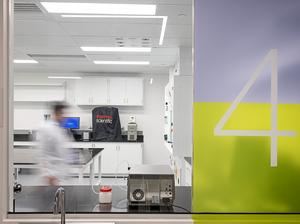For any startup, expanding the user base is an ultimate goal - but what happens when the startup itself can’t quite keep up with the demand?
Since Boston startup Jana released its targeted mobile advertising offering Marketplace in March, the Back Bay based startup has seen a spike in interest around the service—which lets emerging-market consumers to connect with global brands using their mobile phones. Marketers can buy app install ads or short video ads and send them to mobile users across the world - who, if they opt in, then get a payment to cover the cost of the data required to view the content.
It’s seen as a win-win: Through Jana’s integrations with the billing systems of about 237 mobile operators in 102 countries, the company can redirect a portion of the billions of dollars spent on traditional advertising into the bank accounts of the consumers that brands are most eager to reach. And the reach is pretty impressive—roughly 3.48 billion mobile phones and counting. Meanwhile, brands are able to better understand, attract and retain new customers while building relationships with them via mobile.
Oh, and to put things in perspective, among the portfolio of brands using Jana’s tool are Google, Unilever, Microsoft, CNN, Procter & Gamble, Johnson & Johnson, Nestlé and General Mills.
The company, which was formed in 2009, has raised $25 million in funding, including a $15 million round from the French communication giant Publicis Groupe in the summer of 2013. Other investors include Boston’s Spark Capital, New Enterprise Associates partner Rohini Chakravarty, former AOL CEO Jon Miller and former Akamai CEO Paul Sagan. Publicis’ chairman and CEO, Maurice Lévy, also joined Jana's board of directors, calling its services “the next big thing in the communication industry."
Apparently, Lévy’s prediction wasn’t far off. Jana revealed in a blog post that they’ve begun to outgrow their infrastructure. Now, the firm is going back to the drawing board to assess how their computers are set up, and as such, figure out how to continue operations throughout the next phase of growth.
The curve says it all: One glance and it’s clear that the company is handling growth of outlier proportions. The only problem is that the small startup's server load is surging as a result. So as the company plans its next stage of development, Jana has devised some guidelines to support this somewhat unexpected success.
How to handle the growth
For one, Jana has made a commitment to ensuring that each piece of information and configuration has one central source. The company also asserted that as a general rule, “the system with fewest pieces is best." So while there are plenty of attractive third-party operations-as-a-services on the market, Jana would rather keep things simple and reap the assurance of more uptime by sticking with Amazon Web Services. Most importantly, though, the startup noted that human error is inevitable - and since the firm cannot possibly predict the long-term future, it’s more realistic to plan for what will happen in the short term.
“Two steps for us means 50-100x our current load,” Jana wrote. “As we approach those numbers, I expect small adjustments to our infrastructure will no longer keep us going.”
Photo of mobile user via Shutterstock.








